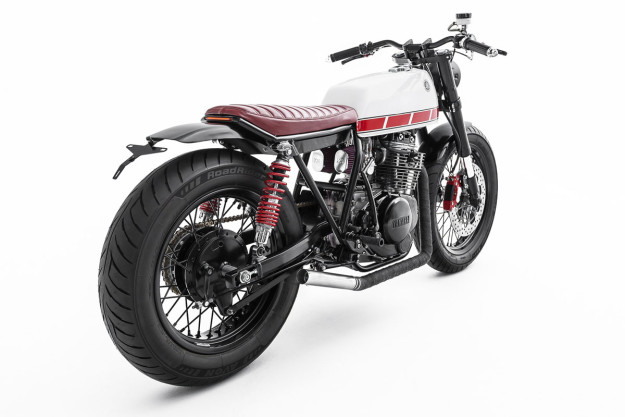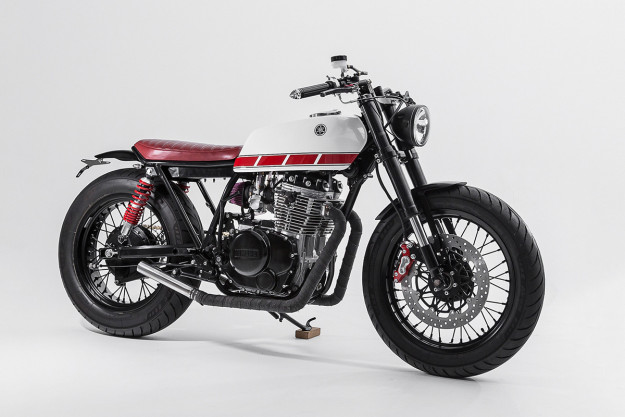
The XS 400 often lurks in the shadows of its more popular RD 400 brother, but it’s a good candidate for a compact custom build. Although it makes less power than the two-stroke RD, the engine is far more useable for a bike around town.
It’s also cheaper than the bigger XS 650, but has similar aftermarket support. All you need to do is find an XS 400 in reasonable starting condition—which should cost less than $2,000 in the States.
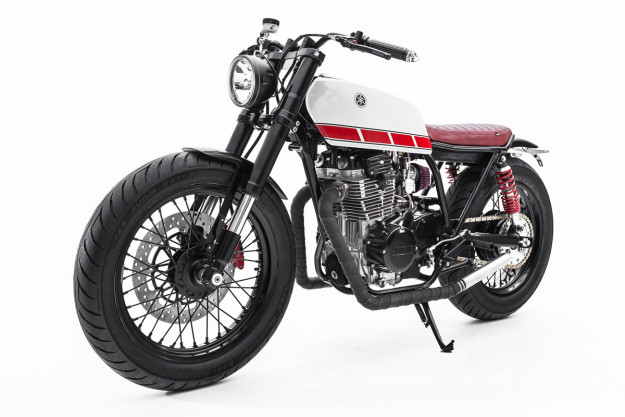
This elegant, beautifully finished machine comes from the Australian workshop Ellaspede. Their customer Dan had always loved the XS 400—mostly for its nimble size and 1970s vibe. Then a search turned up a 1977-spec bike hiding in a barn in northern Queensland.

Style-wise, Dan’s a fan of the bobber scene, and wanted to blend that look with a little cafe flavor. So he contacted Brisbane’s most famous workshop and sent through a collection of images for inspiration.
Ellaspede came up with a concept that mixed classic Yamaha style with a Japanese bobber influence. Then the bike arrived from the top of the sunshine state, and it was time to tear it down.
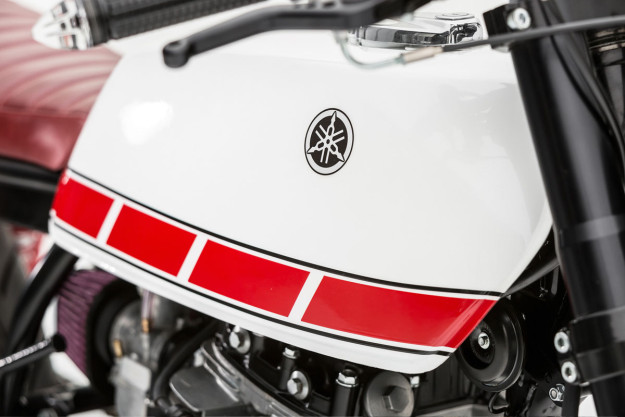
After trial fitting several other vintage tanks—including coming very close to using an RD 400 tank—Ellaspede decided to stick with the stock XS 400.
The frame was detabbed and the rear section modified: not just a standard loop, but with angles that mirror the rear profile of the angular XS 400 tank. The bar at the very back of the frame now has a recess for a frenched-in taillight.
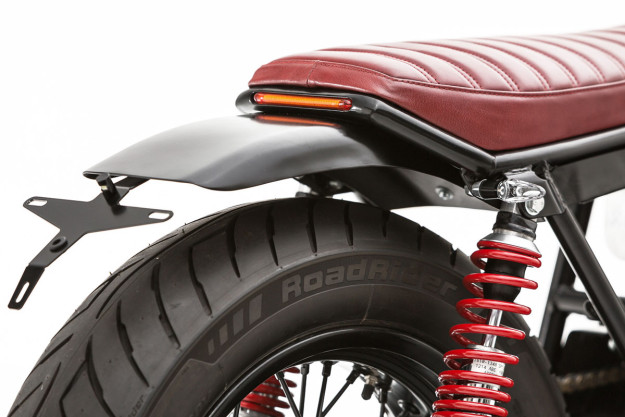
The 392 cc parallel twin got a full makeover before finding its way back into the frame. It’s had a complete top- and bottom-end rebuild with genuine Yamaha parts—including oversize pistons, and new rods, valves and bearings.
Ellaspede also got the crank crack-tested and balanced, and they’ve ported and polished the head before shaving it slightly to bump up compression. Flatslide performance carbs now breathe through oval pod filters.
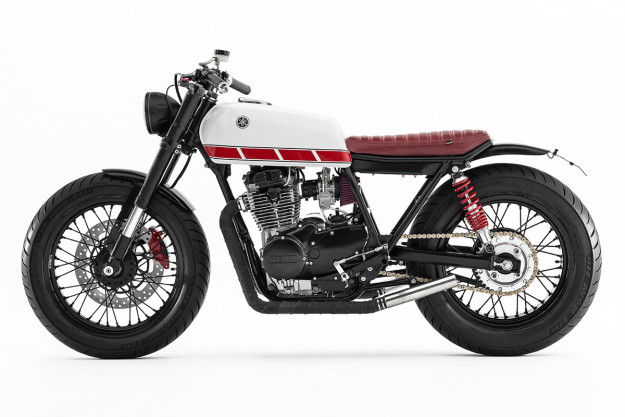
Exhaust gases exit via a custom 2-into-2 stainless system that matches the angles of the frame, and is bolted to the head via laser-cut header pipe flanges.
To produce a healthy mix of noise and backpressure, bolt-in pipe baffles are slotted into the straight-through rear section.
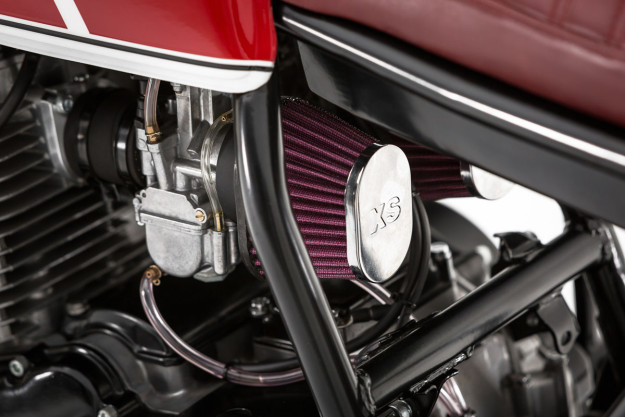
This XS 400 has been lowered, so Ellaspede have made a new battery box, seat pan and rear fender with maximum rear wheel travel in mind.
The battery box was folded up out of sheet steel—it sits as shallow in the frame as possible while still accommodating the electrical components. The back of the box was then shaped to help tire clearance.
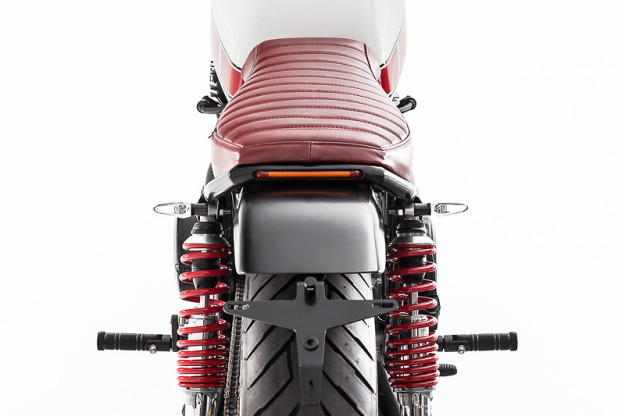
The rear fender also takes angular inspiration from the tank, and sits as high as possible. (The leading face extends through a notched section of the battery box.) The seat pan was a complex shape to maximize foam depth, while still accommodating the ‘tucked’ position of the rear guard.
The Aprilia RS125 USD front end is a modern touch, but looks superb. “It was a surprisingly easy swap,” says Hughan, “slotting straight in to the XS 400 front end.”
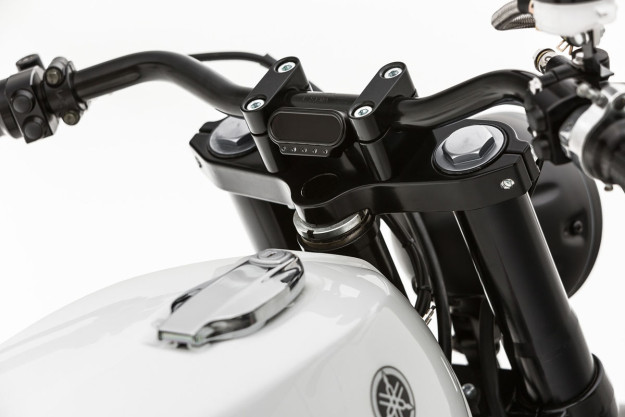
Cleaning up the headstock is an aftermarket CNC top triple tree, with the factory lower fork clamp being machined smooth to match. A subtly angled front fender was shaped up, and sits on custom mounts to hug the bigger front tire.
Out back, custom Ikon 7610 series shocks (with color-coded springs) soak up the road surface.
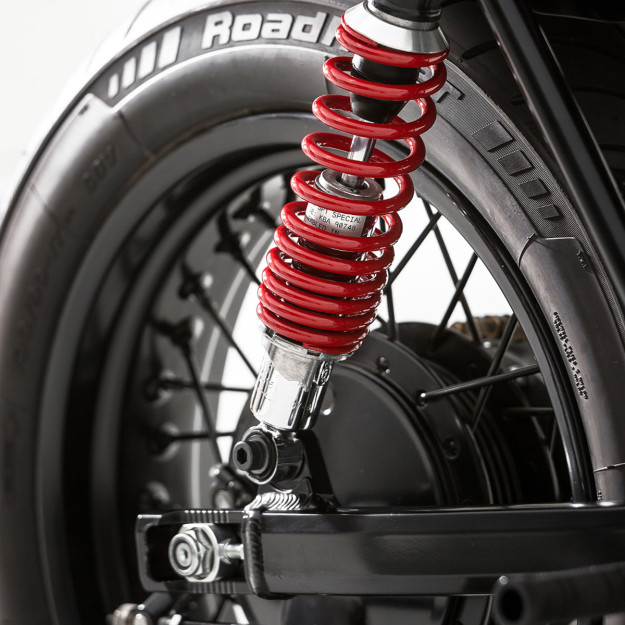
Replacing the factory mags are Yamaha hubs laced up to smart-looking Excel rims: 18×2.5 at the front and 17×4.25 at the back.
The rubber is Avon Roadrunner, in 120/90-18 and 130/90-17 sizes. It’s a big wheel combo that looks just ‘right’ without being cartoonish.
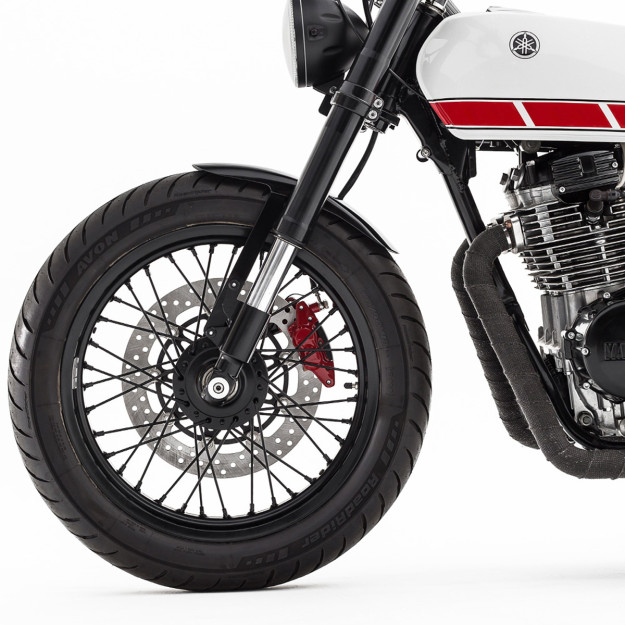
“The front rim was a reasonably straightforward fit,” says Hughan, “with custom axle and brake spacers bringing everything together. The factory Aprilia disc rotor even bolted straight on to the Yamaha hub.”
At the rear, things became more complicated—thanks to the new wheel width. An aftermarket SR500 alloy swingarm provides some more room for the rubber, and custom spacers keep the new rear hub in place.
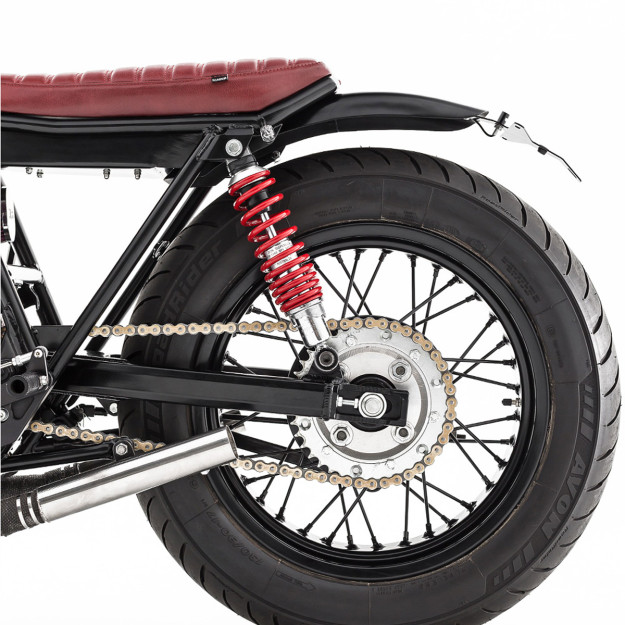
Ellaspede have also fitted offset adapters to space out both sprockets, so the chain can clear the wider rear wheel. And the bulky factory rear disc is gone—replaced by a much more attractive Yamaha drum setup.
On the electrical front, the Motogadget catalog has been raided. This XS400 has been juiced up with an m-Unit control box, m-Blaze indicators, a Motoscope mini gauge, classy m-Grips, and tiny pushbutton m-Switches.
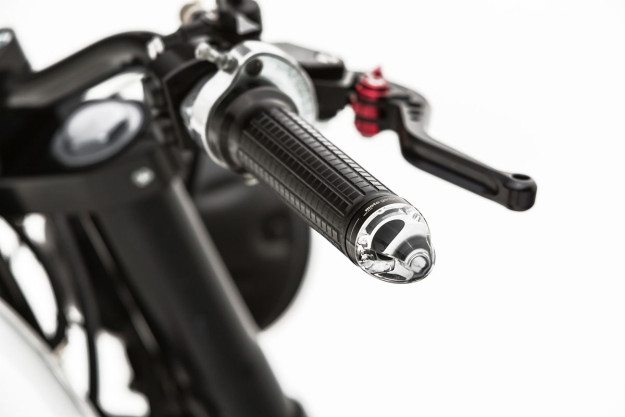
An aftermarket ‘Halo’ headlight lights the way, linked to the other components via an aircraft grade-wiring loom with internal handlebar wiring and hidden routing. An Antigravity lithium battery provides power—but only when the keyless Motogadget m-Lock RFID ignition lock gives the signal.
The controls get a substantial upgrade too, with adjustable levers and a Tommaselli throttle on LSL low-rise bars.
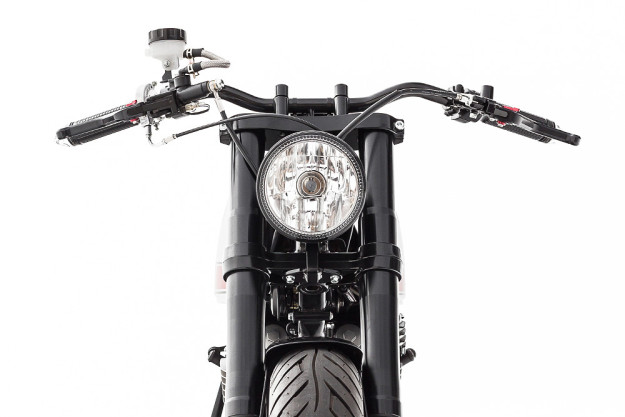
The red and white paint mimics the Yamaha speed block livery, but the colors are actually from Ducati. Splashes of red highlight the front caliper and rear fork springs.
The seat is high-density foam, custom shaped and with a gel insert for extra comfort. The oxblood red cover is practical UV vinyl.
“We loved that Dan had the original idea, but let it grow organically into the finished bike,” says Hughan. “And he wasn’t afraid to rebuild, replace or customize components to make sure the bike functions as well as a new one.”
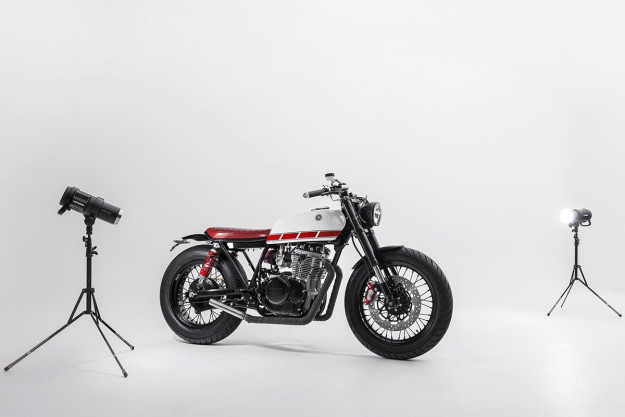
It’s one of those bikes that is ‘bigger’ than the sum of its parts—a winning combination of bobber, classic and cafe influences.
In other words, three of our favorite styles combined in one neat package. And with factory levels of finish, how could we resist?
Ellaspede | Facebook | Instagram | Images by AJ Moller Photography
